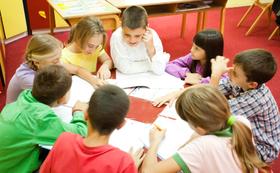Top Rankings
Central Plains School District ranks among the top 20% of public school district in Kansas for:
Category
Attribute
Reading/Language Arts Proficiency
Highest reading/language arts proficiency (Top 10%)
Science Proficiency
Highest science proficiency (Top 20%)
Diversity
Most diverse schools (Top 1%)
Student Attention
Lowest student-teacher ratio (Top 1%)
For the 2025-26 school year, there are 2 public high schools serving 764 students in Central Plains School District. This district's average high testing ranking is 6/10, which is in the top 50% of public high schools in Kansas.
Public High Schools in Central Plains School District have an average math proficiency score of 17% (versus the Kansas public high school average of 22%), and reading proficiency score of 35% (versus the 26% statewide average).
Public High School in Central Plains School District have a Graduation Rate of 80%, which is less than the Kansas average of 87%.
The school with highest graduation rate is Central Plains Jr. Sr. High School, with ≥80% graduation rate. Read more about public school graduation rate statistics in Kansas or national school graduation rate statistics.
Minority enrollment is 35% of the student body (majority Black), which is less than the Kansas public high school average of 37% (majority Hispanic).
Overview
This School District
This State (KS)
# Schools
4 Schools
403 Schools
# Students
1,071 Students
163,604 Students
# Teachers
43 Teachers
10,703 Teachers
Student-Teacher Ratio
10:1
10:1
Student By Grade
District Rank
Central Plains School District, which is ranked within the top 20% of all 286 school districts in Kansas (based off of combined math and reading proficiency testing data) for the 2022-2023 school year.
The school district's graduation rate of 80% has decreased from 90% over five school years.
Overall District Rank
#65 out of 286 school districts
(Top 30%)
(Top 30%)
Math Test Scores (% Proficient)
33%
31%
Reading/Language Arts Test Scores (% Proficient)
46%
32%
Science Test Scores (% Proficient)
40-44%
31%
Graduation Rate
(21-22)≥80%
89%
Students by Ethnicity:
Diversity Score
0.46
0.55
% American Indian
1%
1%
% Asian
1%
3%
% Hispanic
10%
21%
% Black
13%
6%
% White
72%
63%
% Hawaiian
n/a
n/a
% Two or more races
3%
6%
All Ethnic Groups
District Revenue and Spending
The revenue/student of $8,929 in this school district is less than the state median of $16,284. The school district revenue/student has declined by 55% over four school years.
The school district's spending/student of $8,882 is less than the state median of $17,200. The school district spending/student has declined by 55% over four school years.
Total Revenue
$10 MM
$7,774 MM
Spending
$10 MM
$8,211 MM
Revenue / Student
$8,929
$16,284
Spending / Student
$8,882
$17,200
Best Central Plains School District Public High Schools (2025-26)
School
(Math and Reading Proficiency)
(Math and Reading Proficiency)
Location
Quick Facts
Rank: #11.
Central Plains Jr. Sr. High School
(Math: 15-19% | Reading: 30-39%)
Rank:
Rank:
4/
Bottom 50%10
700 Albro
Claflin, KS 67525
(620) 587-3801
Claflin, KS 67525
(620) 587-3801
Gr: 7-12 | 141 students Student-teacher ratio: 10:1 Minority enrollment: 11%
Rank: n/an/a
400 Main
Claflin, KS 67525
(620) 588-4200
Claflin, KS 67525
(620) 588-4200
Gr: 8-12 | 623 students Minority enrollment: 41%
Recent Articles

Charter Schools vs Public Schools 2025: Key Differences & Trends
Explore updated 2025 insights comparing charter schools vs public schools, enrollment, academic outcomes, funding, and real-world examples for families and educators.

Are Public Schools Ready for the 21st Century? 2025 Update
Explore 2025 insights on whether public schools are ready for the 21st century, covering performance, technology, equity, funding, and future-ready learning.

Public School Open House & Enrollment Season Guide
A parent-focused guide to the public school open house and enrollment season, with expert questions, timelines, and decision tips.





